Retro Replay Review
Gameplay
Balance of Power places you at the apex of global decision-making, embodying either the US President or the Soviet General Secretary during the height of the Cold War. From the moment you begin your term, you’re tasked with steering your superpower’s foreign policy, weighing diplomatic overtures against covert operations and, if absolutely necessary, open military intervention. Every decision ripples across the geopolitical landscape, forcing you to predict your rival’s moves and the reactions of up to 62 real-world nations.
(HEY YOU!! We hope you enjoy! We try not to run ads. So basically, this is a very expensive hobby running this site. Please consider joining us for updates, forums, and more. Network w/ us to make some cash or friends while retro gaming, and you can win some free retro games for posting. Okay, carry on 👍)
The core loop revolves around balancing risk and reward. Do you fund a popular uprising in Latin America, risking a Soviet proxy war, or negotiate a treaty that safeguards your strategic interests? Covert actions—whether orchestrated by the CIA or the KGB—add a thrilling layer of clandestine intrigue, from election interference to sabotage. Yet, each bold move brings the ever-present threat of nuclear escalation, making restraint as critical as ambition.
What truly sets Balance of Power apart is its dynamic AI. Your opponent, whether human or computer-controlled, responds not with scripted behavior but with their own calculated strategies. This adaptability ensures that no two campaigns feel the same. You might find yourself in a tense standoff over Indonesia one playthrough, then scrambling to contain a revolution in Angola the next.
The learning curve can be steep for players new to grand strategy, but the depth here rewards careful study. A single miscalculation—a failed alliance, an overzealous military strike—can shift the world’s balance and force you to rethink your entire approach. In this way, the gameplay offers a masterclass in strategic thinking and risk management.
Graphics
Released in 1986, Balance of Power’s visuals are understandably utilitarian, prioritizing information density over flashy aesthetics. The world map, color-coded by region and influence, serves as your command center. While primitive by modern standards, the map’s clarity and straightforward interface effectively communicate complex geopolitical data.
Menus and report screens display detailed country statistics—population, GDP, stability, and more—typed out in clean, legible text. There are no cinematic cutscenes or lavish animations here; every pixel is devoted to delivering real-time feedback on your policies, covert actions, and diplomatic ties. This minimalist presentation helps maintain immersion in the high-stakes chess match between superpowers.
Graphical indicators for military units, alliance treaties, and coup attempts are simple icons, but they’re intuitively designed and color-coordinated. You won’t be dazzled by particle effects, but you will appreciate the absence of visual clutter that could obscure crucial strategic data. In essence, Balance of Power’s graphics embrace function over form, aligning perfectly with its cerebral gameplay.
For fans of retro strategy titles, these vintage visuals carry a nostalgic charm. If you’re expecting AAA blockbuster-level graphics, you may feel underwhelmed. However, if you value clarity, speed, and a clean user interface that keeps the focus on decisions rather than eye candy, Balance of Power’s graphical approach remains impressively serviceable even today.
Story
Balance of Power doesn’t deliver a scripted narrative with protagonists and plot twists; instead, its story emerges from the strategic contest between superpowers. Each campaign unfolds like a living Cold War saga, shaped by your choices and those of your adversary. You are the author of every crisis—be it a Cuban missile scare or a Southeast Asian uprising.
The game’s narrative strength lies in its historical authenticity. With data on 62 countries reflecting their mid-1985 political and economic realities, Balance of Power grounds its emergent storytelling in plausible scenarios. When you manipulate events in Iran, Nigeria, or Guatemala, you’re operating within a framework informed by real-world tensions and resources.
Moments of high drama—negotiating non-aggression pacts, responding to surprise coups, or averting the brink of nuclear war—lend cinematic weight to your strategic maneuvers. Even without voice acting or cutscenes, the tension is palpable as the “red button” threat looms, turning every diplomatic move into a potential cliffhanger.
This sandbox narrative encourages multiple playthroughs. You might explore aggressive expansionism one campaign, then adopt a more cautious, detente-driven approach in the next. The evolving storyline of international relations ensures that each play session feels uniquely yours, anchoring the game’s appeal in replayable, player-driven drama.
Overall Experience
Balance of Power remains a benchmark for Cold War strategy, offering an unparalleled blend of depth, tension, and historical texture. Its focus on geopolitical maneuvering over resource micromanagement sets it apart from many contemporaries, delivering a pure strategy experience centered on diplomacy, espionage, and the constant specter of nuclear conflict.
The game’s challenge is its greatest asset. Every decision carries weight, and the possibility of mutual destruction hangs over each negotiation. This creates an addictive push-and-pull as you balance audacity with caution, making victories feel hard-earned and defeats deeply instructive. Patience and foresight are rewarded, while impulsive actions can end your campaign in an instant.
Longevity is another key strength. With human-versus-human hotseat play, you can pit friends against each other, transforming every match into a personal rivalry. Meanwhile, the AI opponent offers enough sophistication to keep solo players engaged for dozens of sessions. The 62-country roster and multiple strategic avenues ensure that no two games play out identically.
For buyers seeking a cerebral strategy title steeped in Cold War intrigue, Balance of Power remains a must-play classic. Its graphics may feel dated, but its gameplay and emergent storytelling continue to captivate. If you’re ready to test your diplomatic acumen and risk management under the looming threat of nuclear war, this early grand strategy masterpiece still stands the test of time.
 Retro Replay Retro Replay gaming reviews, news, emulation, geek stuff and more!
Retro Replay Retro Replay gaming reviews, news, emulation, geek stuff and more!
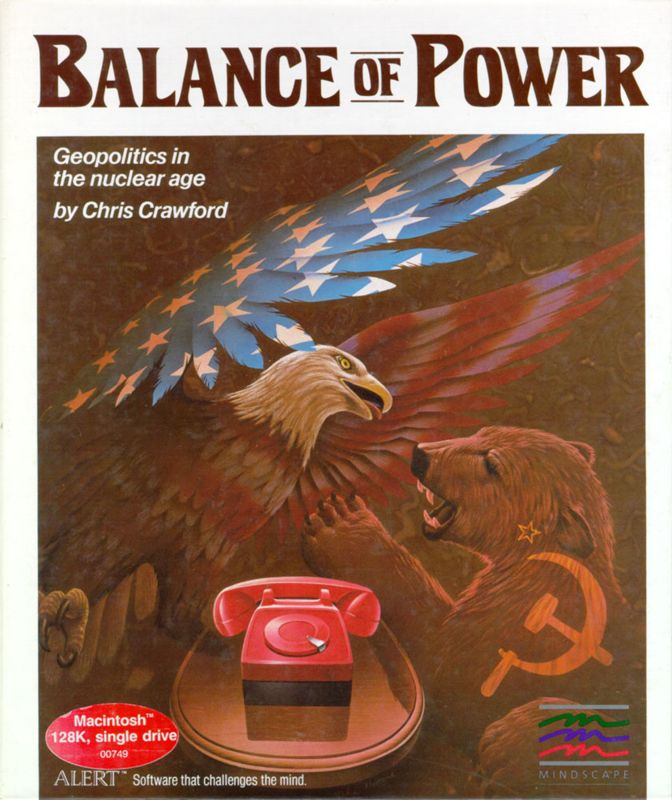
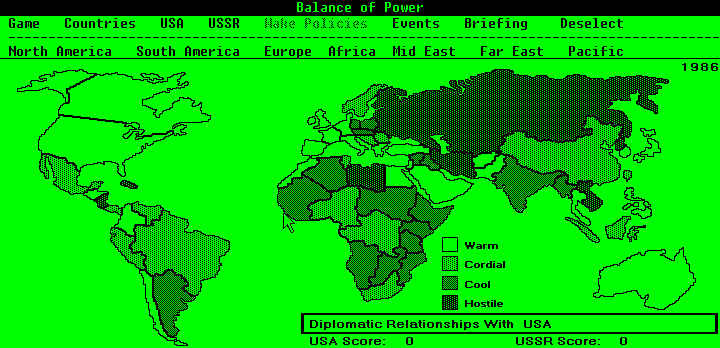
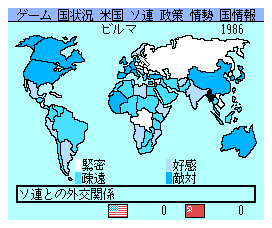
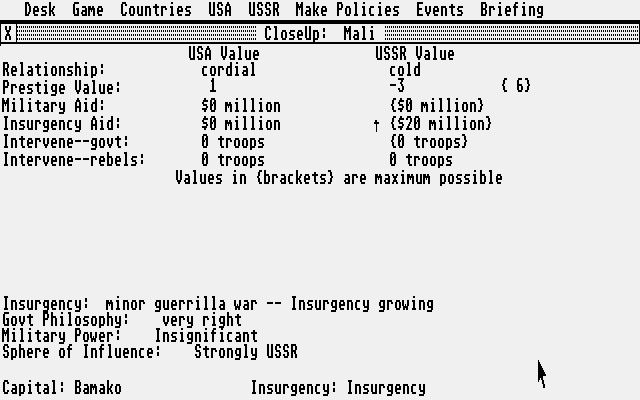
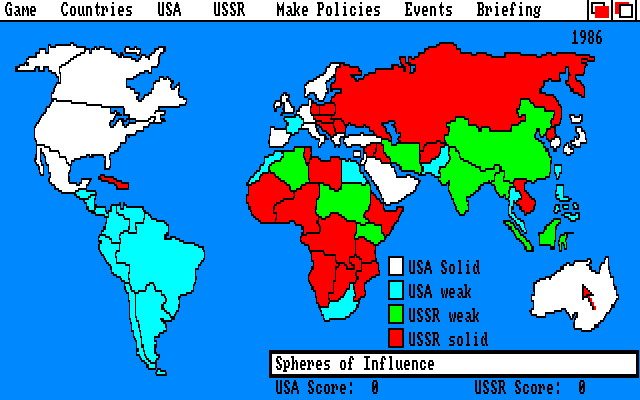
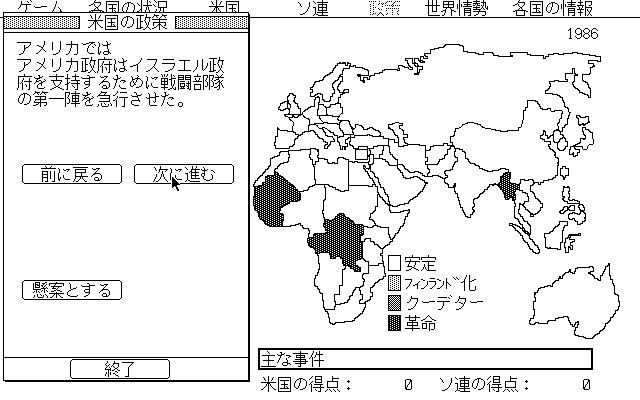

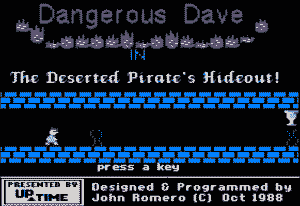

Reviews
There are no reviews yet.